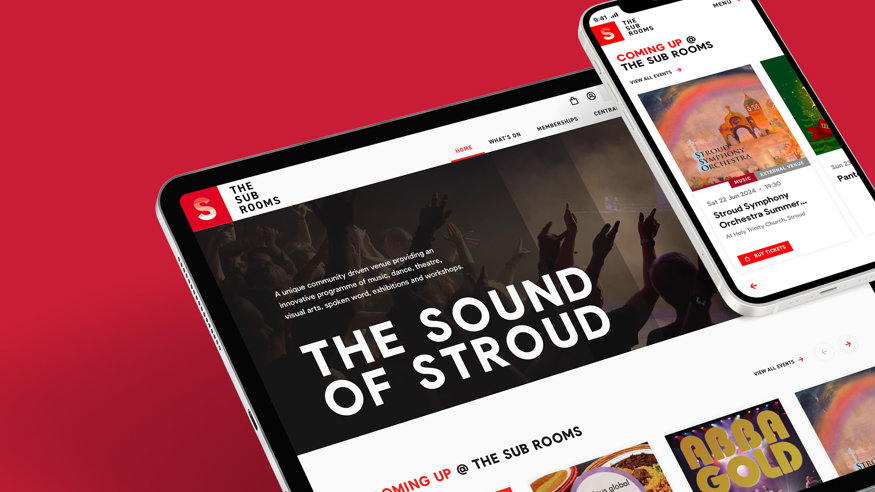Exploring the benefits of Umbraco 17: a leap forward in CMS flexibility and performance

Umbraco has long held the reputation as a flexible, developer‑friendly content management system (CMS) and with the release of Umbraco 17 scheduled for 27 November 2025, the platform is continuing to evolve.
Overview
Umbraco 17 will be the next Long‑Term Support (LTS) version, aligned with the upcoming .NET 10 LTS release, and is expected to include enhancements in performance, developer experience, and content workflow modernisation.
Whether you're a developer, content editor, or digital strategist, the update is an important step in the platform’s ongoing development, with this blog providing a recap of the Umbraco release cycle, alongside an overview of the most impactful features introduced in Umbraco 17.
Umbraco release cycle: a recap
Committed to maintaining the stability and security of its platform, Umbraco is actively maintained through regular performance reviews, security patches, and bug fixes with the current release cycle split into Short-Term-Supported (STS) (supported for six months) and LTS (supported for 3 years) - with an overview of each detailed below:
STS (Short-Term Support) — currently v16.1.1:
STS releases receive feature updates and support for a shorter duration (typically 6 months of feature updates, with security patches and bug fixes extending up to about 1 year). STS versions provide developers early access to the latest features and improvements and allow the community to provide feedback that helps shape the next LTS release.
LTS (Long-Term Support) — currently Umbraco 13:
LTS releases receive feature updates for a limited initial period but are supported with security patches and critical bug fixes for a much longer time (typically around 3 years). These releases are recommended for projects prioritising stability and long-term maintenance. LTS versions generally do not receive frequent feature updates after the initial period but benefit from extended support.
Umbraco 17: key benefits
Scheduled for release in November 2025, Umbraco 17 provides long-term stability and extended security support, primarily through:
1. Native .NET 10 support
Umbraco 17 is built on .NET 10, Microsoft's upcoming LTS framework, which provides:
Improved performance through continued runtime optimisations, better ‘Just-In-Time’ (JIT) compilation, and enhanced memory handling
Long-term stability via .NET 10’s extended support lifecycle, making it a dependable foundation for enterprise projects
Future readiness as .NET 10 continues Microsoft's investment in cross-platform development, cloud-native capabilities, and performance at scale.
For developers and digital teams, Umbraco 17’s native support for .NET 10 makes it a robust choice for long-term projects, combining the latest in performance, maintainability, and platform stability.
2. New routing engine (Vendr-inspired)
One of the most notable architectural changes in Umbraco 17 is its modernised routing system which, with borrowed concepts from Vendr (the eCommerce package for Umbraco), allows for:
Greater flexibility in content delivery through precise routing of requests to designated controllers or templates
Cleaner code and easier updates, including greater control over how URLs map to content
Easier customisation for headless or hybrid implementations.
With improved performance and enhanced developer control, the update provides a strong foundation for more scalable and complex web applications.
3. Improved block grid editor experience
Umbraco 17 continues to refine the Block Grid Editor, making it even more powerful for content modelling and layout flexibility, in particular:
Editors can now easily create dynamic, modular content sections - providing greater control, without developer input
Enhanced back-end structuring provides developers with a cleaner codebase and smoother integrations with front-end frameworks like React or Vue.
Featuring improved usability and stronger integration capabilities, it’s a significant upgrade for both development teams and content creators.
4. Backoffice UX improvements
Already renowned for its clean and intuitive design, the back-office interface in Umbraco 17 receives several, additional enhancements, with a strong focus on usability and efficiency, including:
Faster load times and smoother transitions
Improved property editors and configuration panels
Better accessibility compliance for a wider audience.
For organisations with large content teams, these updates provide an improved editing experience, and ultimately enhanced productivity.
5. Enhanced headless capabilities
With APIs now a core part of the Umbraco ecosystem, version 17 strengthens its support for headless architectures through:
RESTful and GraphQL APIs are much more robust and easier to configure
Provision for JAMstack architectures or integration with frontend frameworks such as Next.js, Nuxt, or Angular
Support for hybrid scenarios where content is shared between traditional websites and modern web apps.
For developers working on decoupled or omnichannel experiences, Umbraco 17 presents a compelling and future-ready solution.
6. Improved dependency injection and modularity
Umbraco 17 embraces modern .NET practices by enhancing dependency injection (DI) and modular service registration, providing:
Better separation of concerns and cleaner architecture
Easier plugin development and customisation without needing to hack core files
Simplification of unit testing and CI/CD pipeline integration.
Ultimately this brings Umbraco more in line with best practices from enterprise-grade .NET applications.
7. Better cloud & DevOps readiness
Umbraco Cloud and self-hosted deployments both benefit from improved:
Environment configuration management (easier use of environment variables and secrets)
CI/CD compatibility with streamlined deployment and upgrade paths
Container support, making it easier to deploy Umbraco in Docker/Kubernetes environments.
Umbraco 17 is clearly built with modern development and deployment workflows in mind.
Final thoughts: is it worth upgrading?
For organisations already using Umbraco 10 or newer, upgrading to Umbraco 17 is a relatively seamless process and offers notable improvements in performance, usability, and architecture. Equally, for those operating on older versions (such as Umbraco 7 or 8), now is the ideal time to begin planning a migration.
With long-term support for both Umbraco 17 and .NET 10, this upgrade positions your digital platform for future growth—while enabling access to modern development tools and more efficient workflows.
Ultimately, for anyone seeking flexibility, improved developer experience, and a robust editorial interface, Umbraco 17 represents a significant step forward.
Ready to try Umbraco 17?
Need help planning an upgrade or migration? Get in touch with the 16i team.
Share article:

Upgrading to Umbraco 17: a strategic investment for your business
Used and trusted by both developers and marketers, Umbraco offers a high level of customisability, with the latest long-term-supported (LTS) version (Umbraco 17) currently scheduled for release in November 2025. Featuring improved performance and developer tooling, alongside support for the latest .NET versions, Umbraco 17 offers a number of benefits including enhanced security, streamlined workflows, and improved scalability.
Read more
How to avoid website project horror stories!
Maybe you've been there before, maybe this is your first time creating a website. We have seen website projects at all stages turn from dreams into nightmares very easily, often being the ones at the other end helping our soon to be clients put it back on the right path.
Read more
The future is bright for the Sub Rooms
New website and Spektrix integration helped Sub Rooms turn a corner
Read more
Website builders vs bespoke: which is right for your business?
In a digital-first world, a company’s website (and its overall effectiveness) is of paramount importance, serving as both the first impression and initial introduction to a brand. Traditionally built from the ground up by experienced developers, website creation has become increasingly accessible, primarily due to the rise of website builders such as Squarespace, Wix, Weebly, and Webflow, These platforms offer powerful tools, sleek templates, and rapid setup options, without the need for direct developer involvement. However, for businesses with more complex or unique requirements, they can be limiting, with many instead opting for bespoke development tailored to the specific project goals, workflows, and user experience. This blog outlines the pros and cons of each –off-the-shelf website builders vs bespoke development.
Read more
How to spot a text message, iMessage or WhatsApp scam
Top 6 red flags for suspicious text messages
Read more
Benefits of team building away days
We were delighted to welcome South West HR consultants, Rise HR, for a for a training day
Read more
16i x Spektrix | Partnership announced
We’re incredibly proud to become a certified Spektrix partner. Having worked with a variety of arts organisations over the years, we know how vital it is to connect digital platforms with the ticketing and CRM systems they rely on.
Read more
Spektrix: a detailed guide
Utilised by a global user-base, Spektrix has become the market leader in back office and digital marketing systems, primarily within the arts industry. This blog explores what it is, who uses it and most importantly, how it could benefit your business.
Read more